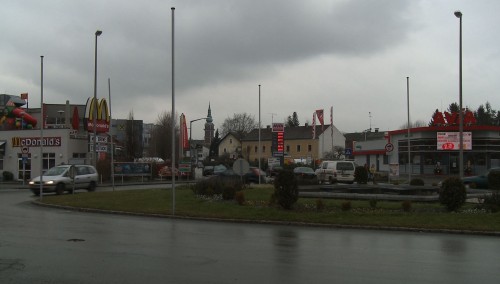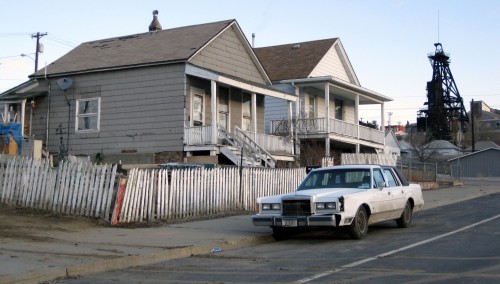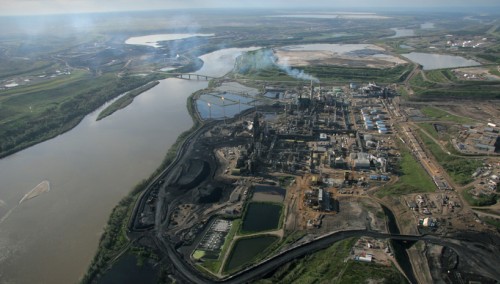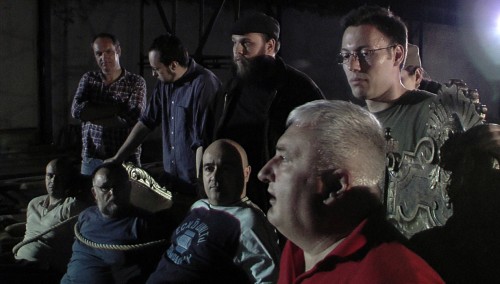Working Worlds 2010
To some extent, documenting contemporary working worlds follows Zeno’s paradox: whenever you think you have come a bit closer to a certain manifestation of work, it turns out in the end that the development has already taken a different direction. Even in the economic crisis, to which it seems that cinema is too unwieldy to be able to react quickly, this still applies. While people are already working on new solutions elsewhere and disturbing developments are already recognizable – as though no one had learned anything from the whole mess – the focus of films is still shifting to those hit hardest by the consequences of the downward turn: people, or – in the language of experts – human resources, human capital.
This year’s Working Worlds Special takes this development into account and presents, among others, two films concentrating on the margins of the battle zone. Virtual training spaces for the everyday job world make it possible to draw conclusions about reality through their mirroring relationship. These are places where necessities are playfully tested: a job center – as in the title of Angelika Summereder’s film – and seminars and coaching events, in which people made insecure by working life are trained to reenter the job world; these people are also the subject of Katharina Pethke’s film Burning Withi n, which is named after the first part of a quotation from Augustine: “what you wish to kindle in others“, is how the quote continues.
Ignite, convince, make a self-confident appearance: the rhetorical benchmarks of the trainers are high in both films. In Jobcente r experienced people who have been torn out of the everyday world of work encounter those who are just starting out. Now it is a matter of concretizing one’s own wishes and optimizing the corresponding self-presentation. Summereder has decided to take a documentary approach which uses what the location offers (group discussions, job interview simulation, etc.) to come closer to individual protagonists; by way of this, the gap between standardized processes and human singularities becomes especially evident. Katharina Pethke pursues the dissolution of individual idiosyncrasies to draw a general picture: through a higher frequency of montage, she breaks down the rhetorics of seminars into smaller semantic units. Instead of ongoing temporal experiences, the film thus centers around communicative miniatures which are staged in the coaching sessions as the most appropriate set of weapons for holding one’s own in the everyday world of work. It is always the course participants that must work on themselves – insecurities, anxieties and depressions are effects of feeling overwhelmed, which must be therapized, with the goal of increasing efficiency.
As subtle as the demands for the job market have become in western countries, they are carried out just as fundamentally in Želimir Žilnik’s Old School of Capit alism. The Serbian director has found a refreshingly anarchistic hybrid form to tell of the first massive worker protest movement in his country after the end of Socialism. He conjoins documentary footage conveying the outrage in the streets with a kind of docu-soap about a group of factory workers who decide to do something against wage freeze. What starts as an action to retrieve bricks and tools finally turns into a kidnapping: history appears here as a cycle, from which it is always the wrong ones who escape as winners.
The last two films in the program take us to a front that has previously been missing from the Working Worlds. Peter Mettler’s Pet ropolis and Rainer Komers’s Milltown, Montana are less about people than about their effect – about the ecological consequences of industrial locations for a landscape, a culture. Mettler’s film, commissioned by Greenpeace, is impressive in its visual magnificence, which is in turn subjugated to the imperative of opinion. To illustrate the extent of the rearrangement of the Canadian Alberta Tar Sands, a huge tar sand extraction location, the film was shot entirely from a helicopter: images of destruction far beyond imagination. What is important is the border to the intact forest adjacent to the mud-colored wounds in the landscape, which first makes the extent of this intervention clear. What is appealing about Pet ropolis is its reliance on images that alternate between abstraction and evidence; except for a brief closing commentary, the film does without words. Milltown, Montana is also a film without (many) words, about a region from which industry has long since departed – once an important mining location, the mines are now still. Yet ghostly traces remain – and toxic mud that has to be pumped out of the lakes in the course of a renaturalization project. In calm images, Komers’s camera traverses a landscape and its people, in which traditions continue to exist whereas the challenges of the new are only just beginning.





